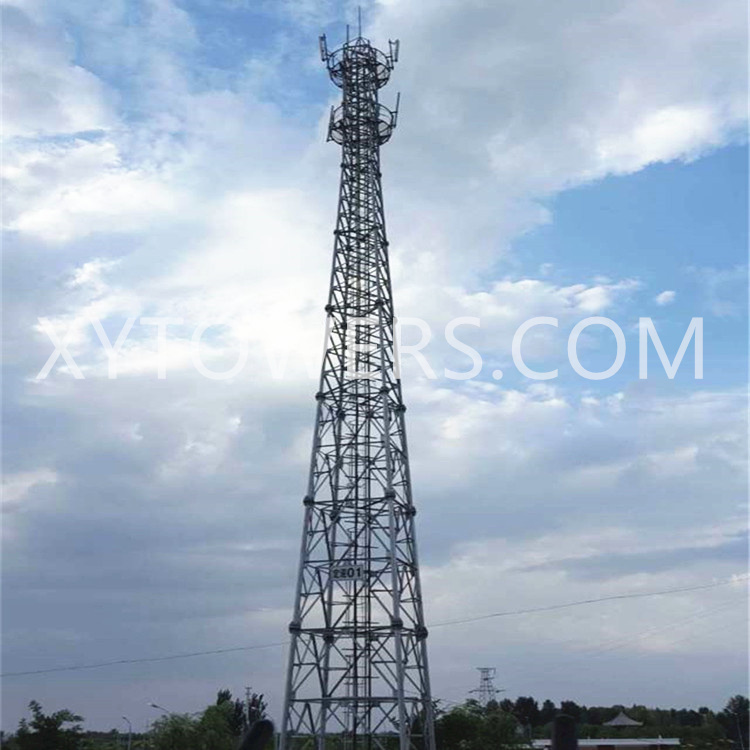
In the rapidly evolving world of telecommunications, 4G telecommunications towers are a critical component in delivering high-speed mobile internet and communication services. These towers, often referred to as communication towers or telecom monopoles, are designed to support the infrastructure required for seamless connectivity. Understanding what a 4G tower looks like can provide insight into how modern communications networks operate.
A typical 4G telecommunications tower is a tall vertical structure, which may vary in design and height. The most common types include lattice towers, monopole towers, and invisible towers. Lattice towers are made of steel and have triangular or square bases that provide stability and strength. Monopole towers, on the other hand, are single cylindrical structures that are generally more aesthetically pleasing and take up less floor space. The invisible tower is designed to blend into the environment, mimicking trees or other structures to minimize visual impact.
Regardless of type, telecommunications towers typically range in height from 50 to 200 feet, depending on the area they serve and the coverage required. Height is critical to maximizing signal range and ensuring towers can communicate effectively with mobile devices over a wide area.
On the top of a 4G telecommunications tower, you will usually find multiple antennas. These antennas are essential for transmitting and receiving signals. A standard 4G tower may have multiple flat, rectangular panel antennas mounted on the surface of the tower. These antennas are responsible for sending and receiving data to and from mobile devices, enabling high-speed Internet access.
In addition to antennas, telecommunications towers are equipped with a variety of other equipment, including radios, microwave antennas, and sometimes even solar panels for greater energy efficiency. The combination of these components enables the tower to handle multiple frequencies and provide reliable service to users.
The deployment of 4G telecom towers is of strategic significance. Towers are often located in areas with high population density, such as city centers, to ensure that the maximum number of users can access the network. However, they can also be found in rural areas to extend coverage where it may be lacking. The location is determined by a variety of factors, including terrain, existing infrastructure, and the coverage needs of the specific area.
Maintaining 4G telecom towers is critical to ensuring optimal performance. To keep equipment running efficiently, regular inspections and upgrades are required. As technology advances, towers may be retrofitted with new equipment to support higher data speeds and improved connectivity, such as the transition from 4G to 5G networks.
To sum up, 4G telecommunications towers are an important part of modern communication infrastructure. Its designs feature various types of structures such as monopoles and grid towers, and are customized to meet the needs of high-speed data transmission. These telecommunications towers play an important role in connecting people and devices by strategically placing antennas and equipment to maximize coverage. As technology continues to evolve, the towers’ appearance and functionality will adapt, ensuring we stay connected in an increasingly digital world. Seeing what a 4G tower looks like not only highlights its importance, but also the continued advancement of telecommunications technology that keeps us all connected.
In the rapidly evolving world of telecommunications, 4G telecommunications towers are a critical component in delivering high-speed mobile internet and communication services. These towers, often referred to as communication towers or telecom monopoles, are designed to support the infrastructure required for seamless connectivity. Understanding what a 4G tower looks like can provide insight into how modern communications networks operate.
A typical 4G telecommunications tower is a tall vertical structure, which may vary in design and height. The most common types include lattice towers, monopole towers, and invisible towers. Lattice towers are made of steel and have triangular or square bases that provide stability and strength. Monopole towers, on the other hand, are single cylindrical structures that are generally more aesthetically pleasing and take up less floor space. The invisible tower is designed to blend into the environment, mimicking trees or other structures to minimize visual impact.
Regardless of type, telecommunications towers typically range in height from 50 to 200 feet, depending on the area they serve and the coverage required. Height is critical to maximizing signal range and ensuring towers can communicate effectively with mobile devices over a wide area.
On the top of a 4G telecommunications tower, you will usually find multiple antennas. These antennas are essential for transmitting and receiving signals. A standard 4G tower may have multiple flat, rectangular panel antennas mounted on the surface of the tower. These antennas are responsible for sending and receiving data to and from mobile devices, enabling high-speed Internet access.
In addition to antennas, telecommunications towers are equipped with a variety of other equipment, including radios, microwave antennas, and sometimes even solar panels for greater energy efficiency. The combination of these components enables the tower to handle multiple frequencies and provide reliable service to users.
The deployment of 4G telecom towers is of strategic significance. Towers are often located in areas with high population density, such as city centers, to ensure that the maximum number of users can access the network. However, they can also be found in rural areas to extend coverage where it may be lacking. The location is determined by a variety of factors, including terrain, existing infrastructure, and the coverage needs of the specific area.
Maintaining 4G telecom towers is critical to ensuring optimal performance. To keep equipment running efficiently, regular inspections and upgrades are required. As technology advances, towers may be retrofitted with new equipment to support higher data speeds and improved connectivity, such as the transition from 4G to 5G networks.
To sum up, 4G telecommunications towers are an important part of modern communication infrastructure. Its designs feature various types of structures such as monopoles and grid towers, and are customized to meet the needs of high-speed data transmission. These telecommunications towers play an important role in connecting people and devices by strategically placing antennas and equipment to maximize coverage. As technology continues to evolve, the towers’ appearance and functionality will adapt, ensuring we stay connected in an increasingly digital world. Seeing what a 4G tower looks like not only highlights its importance, but also the continued advancement of telecommunications technology that keeps us all connected.
Post time: Sep-29-2024





